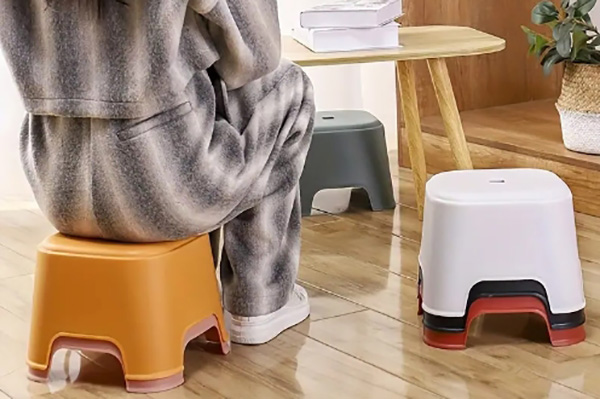Plastic footstools are a common fixture in many households, offering a lightweight and convenient solution for various tasks, from reaching high shelves to providing a step up for children. Despite their simplicity, the weight-bearing capacity of a plastic footstool is an important consideration that can directly impact safety and functionality. So, just how much weight can a plastic foot stool hold? This article explores factors determining a stool’s weight capacity and offers guidance on safe usage.
Material Composition and Design
The weight capacity of a plastic foot stool primarily depends on the type of plastic used and the stool’s design. Most plastic stools are made from high-density polyethylene (HDPE), polypropylene (PP), or acrylonitrile butadiene styrene (ABS). These materials are chosen for their strength, durability, and resistance to cracking or breaking under pressure.
HDPE, for example, is known for its excellent tensile strength, making it a popular choice for heavy-duty plastic stools. ABS plastic is also highly durable, offering a good balance between strength and flexibility. However, the material’s thickness and the manufacturing quality also play significant roles. Thicker, well-crafted plastic can withstand more weight than thinner, lower-quality alternatives.
Structural Design
The design of a plastic footstool is crucial in determining how much weight it can support. Stools with a wide, stable base and reinforced legs are generally able to hold more weight. Some stools feature additional support structures, such as crossbars between the legs or ribbed surfaces, which distribute weight more evenly and reduce the risk of collapse.
Stools designed with non-slip feet or textured surfaces can also enhance safety by preventing slipping and ensuring that the stool remains stable under load. Additionally, the shape of the stool’s legs and how they are attached to the seat can affect how much weight the stool can bear. Legs that are splayed outwards or have a broader base provide more stability, reducing the likelihood of tipping or collapsing under heavy weight.
Weight Capacity Ratings
Most plastic footstools come with a manufacturer’s weight capacity rating, which is a guideline for how much weight the stool can safely support. These ratings are determined through testing and typically reflect the maximum static load the stool can handle. On average, a standard plastic foot stool can hold between 200 to 300 pounds (90 to 135 kilograms). However, heavy-duty models designed for industrial or commercial use may support much more, sometimes up to 500 pounds (227 kilograms) or more.
It’s important to note that exceeding the weight capacity of a stool can lead to structural failure, resulting in cracks, breaks, or collapse, which can cause injury. Therefore, it’s essential to adhere to the weight limits specified by the manufacturer.
Practical Usage Considerations
When using a plastic footstool, there are several practical considerations to ensure it is used safely within its weight capacity:
- Check the Manufacturer’s Rating: Always check the weight capacity rating provided by the manufacturer before using the stool. If you’re unsure, it’s best to err on the side of caution and avoid exceeding the limit.
- Inspect the Stool Regularly: Over time, plastic can degrade due to factors such as UV exposure, repeated use, or impact damage. Regularly inspect your stool for any signs of wear, such as cracks, warping, or weakening of the material, which could compromise its ability to hold weight.
- Even Distribution of Weight: When standing or sitting on a plastic footstool, make sure to distribute your weight evenly across the surface. Avoid placing all your weight on one side or edge of the stool, as this can cause it to tip or collapse.
- Avoid Dynamic Loads: While a stool might hold a certain amount of static weight, dynamic loads—such as jumping or moving suddenly—can exert additional stress on the structure. It’s important to avoid these actions to prevent accidents.
- Consider the Environment: The environment in which the stool is used can also affect its performance. For instance, using a plastic stool on uneven surfaces, or in very hot or cold conditions, can reduce its stability and weight-bearing capacity.
Conclusion
The weight capacity of a plastic foot stool depends on various factors, including the materials used, structural design, and manufacturer specifications. While most standard plastic stools can safely hold between 200 to 300 pounds, it’s crucial to consider the specific model and intended use. By following the manufacturer’s guidelines, regularly inspecting the stool for damage, and using it appropriately, you can ensure that your plastic foot stool remains a safe and reliable tool in your home or workplace.
Ultimately, understanding the limitations of your plastic foot stool is key to preventing accidents and ensuring that it serves its purpose effectively for years to come.
Post time: 08-15-2024




